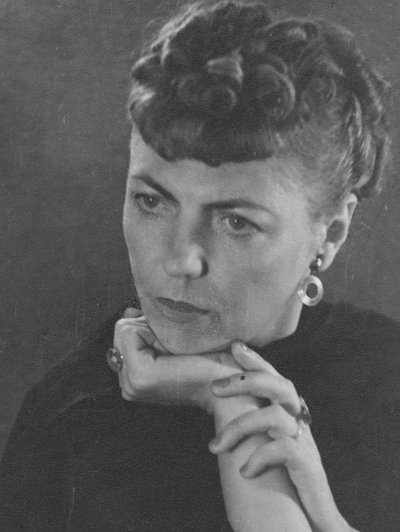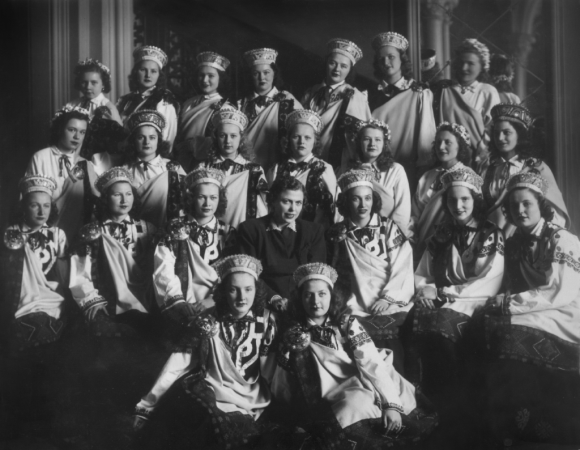Zinaīda Sama
1914–1989
Choreographer, educator
One of the most outstanding Latvian stage-dance masters in post-war Latvia.
Born 8 July 1914 in Rīga. Graduated from Rīga’s No 11 Elementary School (1928), then studied at the Rīga City School of Commerce (1928–1932) and attended Helēna Tangijeva-Birzniece’s Ballet Studio, then the Sam-Hior Univerity of Body Techniques and Beatrise Vīgnere’s School of Plastic.
In parallel, worked as a weaver at the Rīga Silk Factory (1932–1940), and from 1940 at the Rīga Textile Trade Union, first as a clerk and then as the director of 11 dance groups. Unfortunately, World War II stops this work.
In 1942, the opportunity arises to work as assistant ballet master at the New Theatre of Rīga (1942–1943). In 1944, Sama moved to Talsi, where she founded several amateur groups. The Rota (Ornament) dance group gains particular success, not only in the Talsi District, but all over Latvia, in its first year of operation being nominated for the All-Union Workers and Servants amateur music and choreography show in Moscow and takes pride in its 2nd place in the Song Celebration dance-group competition (1948).
From 1948, directed of Labour Reserve Schools’ dance groups in Rīga. This is where the origins of the later, well-known Gatve (Avenue) folk-dance group are found. As early as the 2nd Soviet Latvian Song and Dance Celebration, the dance group takes 2nd place. From 1960, two educators – Gaļina Libere and Zinaida Sama (1960–1966) – worked with the dance group, their work culminating in remarkable success in 1962, when Gatve was awarded the title of People’s Folk-dance ensemble for its special achievements.
In 1950, Sama took over the directorship of the dance group (now the Līgo folk-dance ensemble) of the Cultural Centre of the Republican Trade Union Council of Latvia (now the Mazā ģilde (Small Guild) Rīga Centre for Culture and Folk Art). Under her guidance, the ensemble became one of the best Latvian amateur groups and presented full programme concerts at the Academic Drama Theatre and the Opera and Ballet Theatre (1952), participated in the ballet productions Brīvības sakta (Brooch of Freedom), Laima (Goddess of Fate), in the film Uz jauno krastu (On the New Coast) and in the Latvian Literature and Art Decade in Moscow (1955). The ensemble won the Travelling Red Flag at the 3rd Soviet Latvian Song and Dance Celebration (1955) and participated in the 6th World Young People’s and Student Festival in Moscow (1957).
The choreography created by Sama includes the new dances Pie Gaujas (By the Gauja), Rīga Dance, Midsummer Dance and the arrangement of Gatves deja (Street Dance, performed at the 3rd Dance Celebration in 1955).
A Chief choreographer at the 2nd Dance Celebration, Chief choreographer for dance groups of several Republic districts, actively participated in the work of the E. Melngailis Folk Art Centre choreography council and competition juries.





